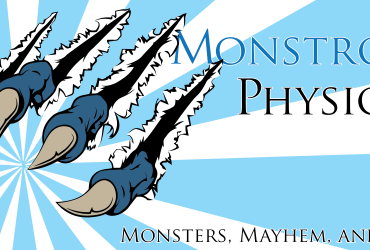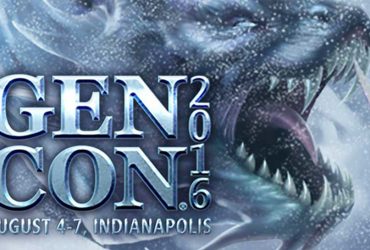Welcome to Guidance, Private Sanctuary’s source for tips and techniques for the Pathfinder Roleplaying Game, written by Everyman Gamer Alexander Augunas. Today, I’m going to be giving my thoughts about the potential for a new edition of the Pathfinder RPG.
Nowadays it seems like everyone is itching for a change. Change in the Pathfinder RPG’s edition, at any rate! There’s been talks about, “When will Paizo make a new edition of Pathfinder,” for a few years now. When Wizards of the Coast announced that they were going to make a fifth edition of Dungeons and Dragons, the talk got big, and that talk’s lingered ever since.
Now, there’s one thing I want to make perfectly clear—despite being a Paizo freelancer I will never know know anything about their release schedule beyond whatever it is I’m working on for Paizo, and I can assure you that I would NOT be writing this article if I was working on Pathfinder 2E or had any intimate knowledge on the subject whatsoever. (Yes, not even to double cross my dear readers.) I will say, however, that as someone who is pretty involved in the RPG industry I do have some insight in regards to sales and other factors that Paizo would consider when deciding when the time is right to print P2E and what sort of content would be in P2E. As a result, there’s no wild speculation in this article—its all 100% educated guessing!
So strap in, and let’s get guessing.
Asseration #1 — Pathfinder 2E Will Not Be a Revamp
Now, this might be surprising but I believe that whenever Pathfinder 2E comes out, it will not be a mechanical or setting revamp in the way that we’re “used to.” While we as a community are totally used to games trying to reinvent themselves for us mechanically and/or setting-wise, its almost never successful. “What are you talking about, Alex? Of course change is successful!” Normally I’d agree with you, Disembodied Strawman Voice, but humor me with a list of major Fantasy genre worlds that have had major mechanical revamps between editions.
- World of Warcraft (MMORPG; counting each “expansion” as an edition)
- Warhammer Fantasy (Tabletop Wargame)
- Dungeons and Dragons (Tabletop RPG)
Pretty good list, right? Okay, now let’s talk about how mechanical changes to those games are received by their fans:
- World of Warcraft: Begrudgingly accepted largely because Blizzard is now able to fix “mistakes” relatively quickly with patches to the game.
- Warhammer Fantasy: Popularity and profitability have been dropping for a LONG time, both because models have become more expensive and the rules tend to favor “armies of the month,” meaning that the newest army is almost always the most powerful for competitive play, and new sculpts for new armies are almost always top tier as well.

This is a sales chart of GWS Revenue from sales during Q4 2015 (Left) and Q$ 2014 (Right). As you can see, their sales fell from the previous year, and this is during the Holiday Season, which is usually a boon to luxury markets like GWS.
- Dungeons and Dragons: Worked for a while (Pre AD&D to AD&D, AD&D to 3rd, 3rd to 3.5), but the transition for 4E ruined the D&D brand with the TTRPG for half a decade, and ultimately the designers had to adopt a modified version of their previous ruleset coupled with an open playtest that was basically a massive PR event in order to recover their brand.
Of this list, World of Warcraft is mostly an outlier, and yes, I’m sure there are other RPGs out there that have managed to pull off drastic overhauls of their game mechanics and stay afloat, but let’s look at the names here: Games Workshop. Wizards of the Coast. Two of the BIGGEST names in the industry fell (or are actively falling) because of the decision to change their mechanics round and force their players to discard old merchandise for the “latest, newest thing.” That’s simply not what the majority of TTRPGamers are into—we tend to see our products as investments for future fun. We don’t want someone telling us that our library is now “obsolete,” and if you think I’m wrong remember back to the early days of Pathfinder. Remember how much Paizo totted that Pathfinder was carrying 3.5’s torch. All of the posters for the Core Rulebook back them said, “3.5 Thrives.” Early Pathfinder advertisements never focused on selling Pathfinder’s own innovations and ideas—it focused on telling gamers, “You don’t need to get rid of the stuff you like. Play with us instead….”

This data was gathered by Awesome Dice Blog; you can click this picture for a link to the blog in question (they have WAY more cool graphs than this one).
So the question that I ask you now is, “Is Pathfinder at the point that the TTRPG community as a whole will forgive a reset?”
My answer is no, and its a pretty simple reason—Pathfinder’s biggest competitor right now is basically its evil twin.
Assertion #2 — D&D 5E Proves a Massive Change Is a Bad Idea
For this to make sense, we have to start with Paizo’s history as an independent First Party company as opposed to what it originally was—a Third Party Company. When Pathfinder first began, it was just a line of adventures that Paizo started to stay in business. Remember, Paizo used to be a Second Party Company—they were basically the Syrinscape of magazines for Wizards of the Coast. So when Wizards pulled Paizo’s ability to make a fanzine, they needed to do something to stay afloat. That “something” was create what we now know as the Adventure Path line. But then 4th Edition happened, and after sending a representative to meet with Wizards of the Coast to see their new game (rather late I might add), Paizo decided to separate from Wizards and do their own thing. Thus the 4th Edition and Pathfinder were created. One died young while the other lives on today.
But Wizards of the Coast, Dungeons and Dragon’s owner and publisher, didn’t die with 4th Edition. They put 4th Edition down and started something fresh and new. Sort of. Under the banner of “pulling from every edition of the game,” Wizards of the Coast created 5th Edition and its doing pretty well. But man, oh man, when you read through 5th Edition it doesn’t really READ like an amalgam of all of the editions of the game. It reads like 3.5, cleaned and refreshed, with some good ideas from 4th Edition sprinkled in.
Wizards of the Coast literally build 5th Edition by taking 3.5, cleaning up parts that didn’t work well, and selling it. Just. Like. Paizo.
And while its difficult to say who is beating who in sales for a number of reasons that don’t matter to this discussion, man oh man is the latest Frankenthree-point-five selling well. And for all its worth, Pathfinder is still doing well for itself too. At Gen Con this last year, I got to GM for a game that—if an official representative were present—would have broken the Guinness World Records for number of players playing the same game simultaneously. To me, none of these things add up to a, “Old, tired game system that needs to be completely redone.
But let’s take the focus off of the competition for a minute and shift it to Paizo and their business strategy.
Assertion #3 — Changing Pathfinder is Bad for Paizo
So, if you’re like me you have a bunch of subscriptions under your belt, right? I just picked up the AP Subscription for Strange Aeons, so currently I’m sitting at AP, Core Rules, PComp, and CampSet for my subscriptions. So of those four, which of them do you think sells the best?
The answer is the flagship product, the product that saved Paizo when they had nothing else, the product that build their campaign setting and showcased their fledgling rules. The Adventure Path line. And let me tell you, changing the rules so they aren’t compatible with the Adventure Path line is NOT a good idea.
Paizo puts out more adventures than any one person can play. Paizo knows this. You know this. I know this. In the past two years, I’ve managed to find time to get to Book 3 in two different Adventure Paths—we’re about one-fourth of the way done Reign of Winter’s Maiden, Mother, Crone and we just started Carrion Crown’s Broken Moon on Saturday. It will likely take my Reign of Winter group until next January or February to finish Reign of Winter if we’re lucky, and my Carrion Crown group moves even slower on account of the once-per-month schedule we have. By the time we’re done Reign of Winter, a new AP will have concluded (Strange Aeons) and a new one will be gearing up (Ironfang Invasion).
Now, Paizo REALLY pushes the AP subscription. If you subscribe to the APs, you get discounts are pretty much EVERY Pathfinder Product. (Its called the Pathfinder Advantage for a reason!) This means that there are plenty of people who are swimming in AP volumes—more then they could ever possibly play. How do you think those subscribers are going to react when they learn that their investment in the AP line will officially become fruitless? That they won’t be able to play all of those Adventures that Paizo spent 5+ years creating? There are going to be angry people, and there are going to be lost subscribers.
But HOW many will Paizo lose? Its impossible to predict human behavior, but we know from the mass exodus that put Paizo on the charts in the first place that the TTRPG community is fickle. We also know from various developer quotes on the forums (James Jacobs himself being one of them) as well as several of the podcasts that the team has done over the years that the AP line is sort of like a train that puts the tracks down in front of it as it goes—each AP largely pays for the next one. But what happens when word gets out that P2E is coming? What if people abandon the subscription?
What *could* happen is that people learn in Q2 of Year A and quickly drop their subscription. Why bother if the product’s game won’t be supported in a year because a newer game is coming? That means that when Gen Con rolls around, there are reduced sales for the AP that’s debuting in Q3, which in turn will affect the ability to produce the next AP in the following February, which means the new Pathfinder Edition’s AP will be affected. (This, of course, assumes a worse-case scenario where Paizo has no money in their vaults to draw on to help them through the transition, which is SUPER unlikely. Still a hit to profits for an entire year will affect the company short-term, which may affect the launch of the P2E product its trying to launch.)
Naturally, this “doomsday scenario” can apply to any of the lines—Player Companions, Campaign Setting Guides, Core Rulebooks, and so on. The only way to dodge this would be to create the P2E rulebook in advance, give it to all of their freelancers in secret (or all of the work for those other lines in secret) and have a massive, surprise system relaunch for all product lines at the same time. Which would be a TERRIBLE idea because even it would destroy consumer trust in Paizo.
Is There a Silver Lining?
I mentioned before that I think a Second Edition of Pathfinder is possible, just that it wouldn’t be like what we’re used to from the likes of Wizards of the Coast or Games Workshop. Paizo is lead by some of the most brilliant designers, developers, publishers, businesspeople, and gamers in the industry—I am confident that when P2E comes, they will not make any of the mistakes I outlined above.
But what WILL they do?
I actually have thoughts on that too, but you’ll have to wait until next week to hear them! Take care.
Alexander “Alex” Augunas has been playing roleplaying games since 2007, which isn’t nearly as long as 90% of his colleagues. Alexander is an active freelancer for the Pathfinder Roleplaying Game and is best known as the author of the Pact Magic Unbound series by Radiance House. Alex is the owner of Everyman Gaming, LLC and is often stylized as the Everyman Gamer in honor of Guidance’s original home. Alex also cohosts the Private Sanctuary Podcast, along with fellow blogger Anthony Li, and you can follow their exploits on Facebook in the 3.5 Private Sanctuary Group, or on Alex’s Twitter, @AlJAug.






